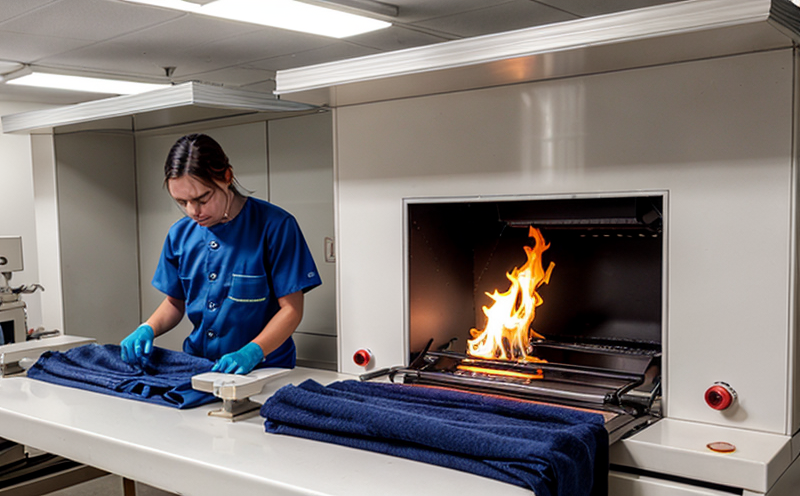Flammability Testing of Decorative Textile Accessories
The flammability testing of decorative textile accessories is a critical process in ensuring public safety and compliance with industry standards. Decorative textiles, including drapes, upholstery fabrics, carpets, and other interior furnishings, are subject to rigorous testing to evaluate their resistance to ignition and flaming characteristics under various conditions.
Flammability tests help manufacturers identify potential hazards early in the product development phase. By understanding how these textiles behave when exposed to fire or heat sources, designers can modify materials or design elements to enhance safety without compromising aesthetics or functionality.
The testing methodologies for decorative textile accessories often involve simulating real-world scenarios where such fabrics might be used. For example:
- Standard flame tests which assess the rate of burning and flaming behavior
- Tunnel tests, like those specified in ISO 13560-2, to evaluate smoke production and toxicity
- Vertical burn tests as per ASTM E672 to measure flame spread rates on vertical surfaces
The importance of flammability testing cannot be overstated, especially in high-risk environments such as public buildings, schools, hospitals, and homes. Compliance with local regulations like NFPA 701 for drapes or EN 13969:2020 for upholstery fabrics is essential to mitigate fire risks.
Our laboratory employs state-of-the-art equipment tailored specifically for the testing of decorative textiles. Our experts ensure that each sample undergoes precise preparation and conditioning according to international standards before being subjected to rigorous tests. This meticulous approach guarantees accurate, reliable results which are crucial for informed decision-making by stakeholders involved in product development.
| Test Method | Description | Purpose |
|---|---|---|
| ASTM E672 Vertical Burn Test | Mimics the behavior of fabrics in a vertical orientation when exposed to a flame. | Evaluates flame spread rates and char lengths. |
| NFPA 701 Standard Methods for the Fire Tests of Textiles | Tests textiles used in drapes, curtains, and similar applications to determine their flammability characteristics under specific conditions. | Ensures compliance with building codes and fire safety regulations. |
Industry Applications
The application of flammability testing extends beyond just decorative textiles; it is crucial for ensuring the safety of various consumer goods and commercial products. Here are some key areas where this service plays a vital role:
- Furniture Industry: Upholstered furniture must meet stringent fire safety requirements to protect consumers from potential burns and smoke inhalation.
- Textile Manufacturing: Ensuring that fabrics used in clothing comply with flammability standards helps prevent accidental fires during wear or storage.
- Residential & Commercial Construction: Decorative finishes on walls, ceilings, and floors need to be evaluated for their flame retardant properties.
Competitive Advantage and Market Impact
Adopting comprehensive flammability testing ensures businesses stay ahead of regulatory changes while enhancing brand reputation through adherence to safety standards. A well-established quality assurance process backed by robust test data can significantly improve product reliability, consumer trust, and overall market performance.
For instance, companies that invest in advanced laboratory services gain a competitive edge by being able to address emerging trends and challenges more effectively than their competitors. They also demonstrate commitment to sustainability and responsible sourcing practices which resonate strongly with environmentally conscious consumers.
Use Cases and Application Examples
- Testing Drapes: Ensuring that drapery fabrics meet NFPA 701 standards prevents the spread of fire in residential settings.
- Evaluating Upholstery Fabrics: Compliance with ASTM E672 helps furniture manufacturers comply with fire safety codes.
- Assessing Carpet Samples: Adherence to EN 13969:2020 ensures that carpets used in public spaces are flame retardant and safe for use.





